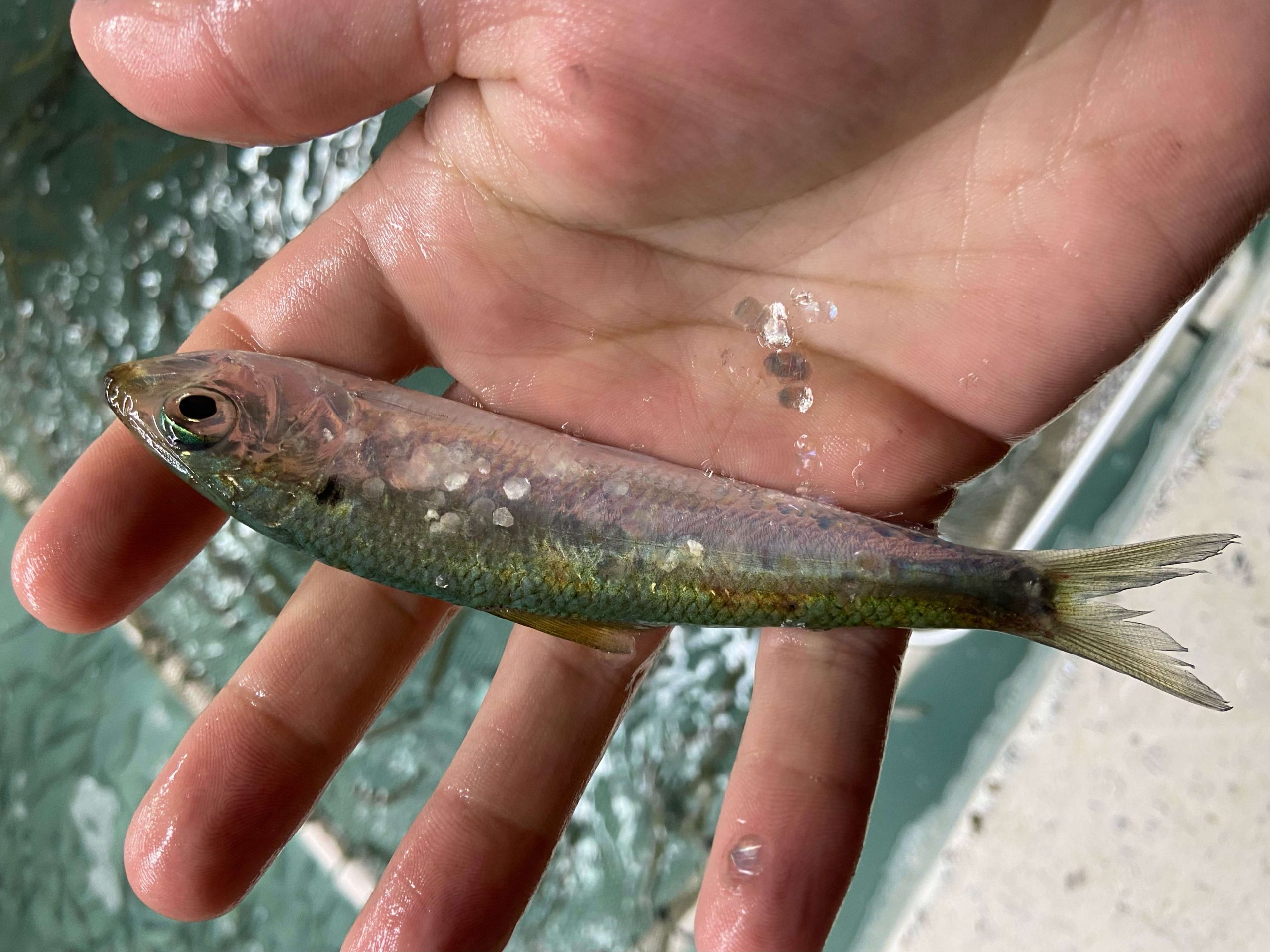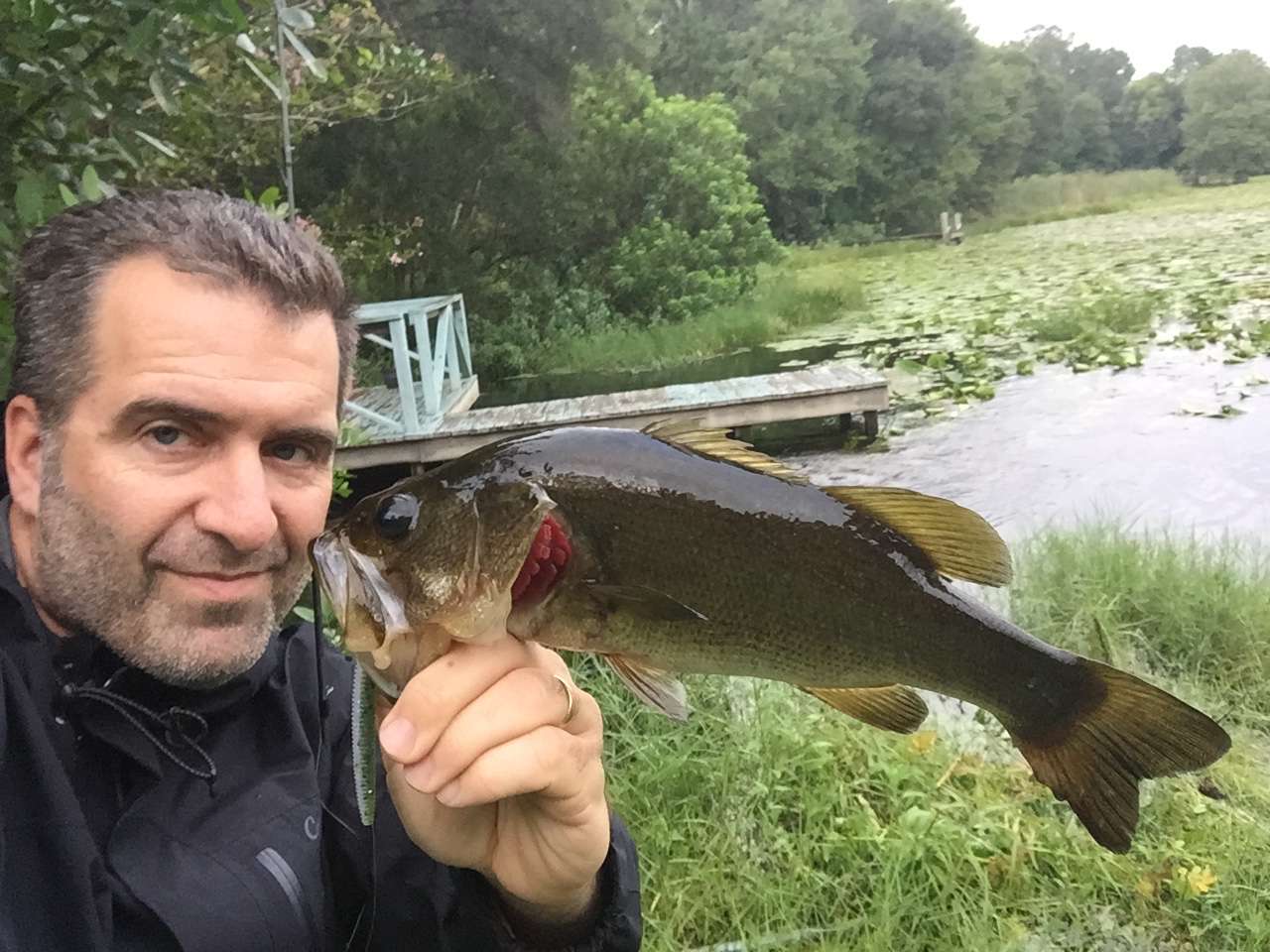
Something old, something new, something borrowed, something blue.
You hear that one a lot in talks of wedding plans, but while the tradition helps guide a bride’s big day, the phrase also bears a surprisingly apropos connection to Lake Hartwell’s forage base.
How could it play out at the 2022 Academy Sports + Outdoors Bassmaster Classic presented by Huk? Let’s walk through it.
Something old: The Savannah River — Archeological records indicate a Paleoindian presence along this waterway bordering Georgia and South Carolina near the end of the Ice Age, approximately 12,000 years ago.
Something new: Lake Hartwell — a bit of a stretch, but the 1963 impoundment makes it newer than, say, the Great Pyramid of Giza, so you know.
Something borrowed: Threadfin shad. (Stay with us.)
Something blue: Blueback herring were inadvertently gathered along with those shad.
So, putting it all together, Lake Hartwell — the Savannah River reservoir hosting the Classic — gained an unexpected food source in the process of stocking another.

Blueback background
According to the U.S. Fish and Wildlife Service, blueback herring (Alosa aestivalis) range from Nova Scotia to Florida’s St. Johns River. They commonly grow to 11 inches, but reports indicate bluebacks can reach 15 inches and weights of nearly half a pound. Most are considerably smaller, but this is definitely one of Hartwell’s larger forage species.
Dan Rankin, biologist with the South Carolina Department of Natural Resources (SCDNR), said the bluebacks arrived in Hartwell by accident and turned out to be an unexpected success story. The main reason — bluebacks are anadromous, meaning they live in the ocean and spawn in coastal rivers.
“My understanding is that (bluebacks) were transported in early in the (creation of the) Savannah River reservoirs through threadfin shad stocking,” Rankin said. “The threadfins were collected from the Santee-Cooper Lakes, and the bluebacks were mixed with them.
“At the time, it wasn’t known if the blueback herring — being an anadromous species — would live in a landlocked situation, but they did. They found the habitat they needed for spawning habitat and have adapted to that situation. It was to the surprise of many that they did.
Notably, Rankin said Hartwell also holds a population of hickory shad, another anadromous species, in lesser numbers than bluebacks.
Blueback impact
Similar to the round goby’s introduction into the St. Lawrence Seaway and the explosion of bulging smallmouth bass, Hartwell’s largemouth and spotted bass quickly added bluebacks to their dietary preferences. Rankin said studies indicate the bluebacks have mostly complemented native freshwater forage, but one of their tendencies has required some level of management effort.
“It’s hard to quantify (the blueback’s impact) exactly, but it’s kind of a double-edged sword with herring, because they do offer a larger prey item than threadfin, so that’s good for bass, in general,” Rankin said. “On the downside, whereas threadfin are filter feeders, some studies have shown that bluebacks will eat zooplankton, and they have been known to eat small gamefish larvae. So, in some situations, there can be some detrimental aspect.”
In terms of how the bluebacks influence Hartwell’s bass population, Rankin said the benchmark metric — recruitment of juveniles into the spawning population — has shown nothing concerning since the herring’s arrival.
“With the bass, we don’t see an impact where we have poor recruitment — like, for instance, there were so many bluebacks they’re eating up the young bass and we’re not having good numbers of young bass to replace ones lost to natural mortality and harvest,” Rankin said. “We don’t see that in Hartwell; we see good, really high recruitment of black bass. So, it’s probably largely a positive benefit from the larger prey item.”
Of course, too much of a good thing can become a bad thing. So, to stave off any such potential, the SCDNR, in cooperation with its Georgia counterpart, stock striped bass and striped/white bass hybrids in to Hartwell. Favoring the open water roaming lifestyle, these fish are the ideal biological control agents for keeping a lid on the mostly nomadic bluebacks.
Striper and hybrid stocking numbers vary year-to-year, but Rankin said the annual goal is 15 per acre.
“I think that’s a positive thing to keep those forage populations in check, so that we don’t see some of the negative side effects,” Rankin said.
Blueback decisions
Notwithstanding the absence of measurable negative impact, blueback herring have unquestionably changed the Hartwell game. Fast-moving, nomadic types, these baitfish have turned a lot of bass into incurable roamers.
The Classic will take place about a month before the herring spawn starts, and several months before the summer cane pile action commences. Nevertheless, Elite Series angler Patrick Walters said these baitfish will unquestionably play some role in Classic game plans.
“One hundred percent — if there are herring in the lake, they affect the fishery,” the Summerville, S.C. pro said. “It affects where fish go, how they set up, everything. When there are herring in a lake, (many of) those fish turn pelagic. They’ll stay in groups, and they stay on the move.
“That’s the hardest thing about a herring lake; somebody cracks a big bag on Day 1 and they go back Day 2 and fish the same thing and they think ‘the fish just aren’t biting,’ but those fish are gone. Even though it’s winter and the herring aren’t spawning, you have to keep your foot on the gas and stay with them.”
Noting that the Hartwell bass will school on bluebacks even in the dead of winter, Walters said the decision to factor the herring into a game plan is less about “if” than “how.”
“They’re always going to be eating (blueback herring); even if you’re sitting on a dock, that might just be their ambush point,” Walters said. “You can’t bank on one single (herring-related) pattern; you just have to decide if you’re going to go chase the ones swimming around, or the ones that are waiting for the herring to come to them.”
No risk, no reward
Everyone knows the Classic is a no-points, go-for-it tournament. You must make it to Day 3, but this event definitely sees anglers taking bigger risks and swinging harder than they might while pursuing seasonal points standings and Angler of the Year titles.
That being said, blueback herring can make you and they can break you. You could burn hours with nothing to show for it, or you could hit the right flurry and sack ‘em up in short order.
One Classic certainty: Fortunes will rise and fall with herring-based decisions.
The big walking topwaters that tempt summertime herring eaters aren’t likely to play during the early-March timing, but Walters expects jerkbaits and swimbaits to do a good job of mimicking bluebacks lower in the water column.
“When herring are in the lake, I’m going to bank on chasing the ones that eat ‘em,” he said. “I’m not going to go into a lion’s den and feed them salad; I’m going to feed that son of a gun steak because that’s what he wants.”

